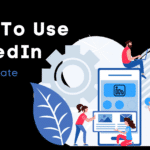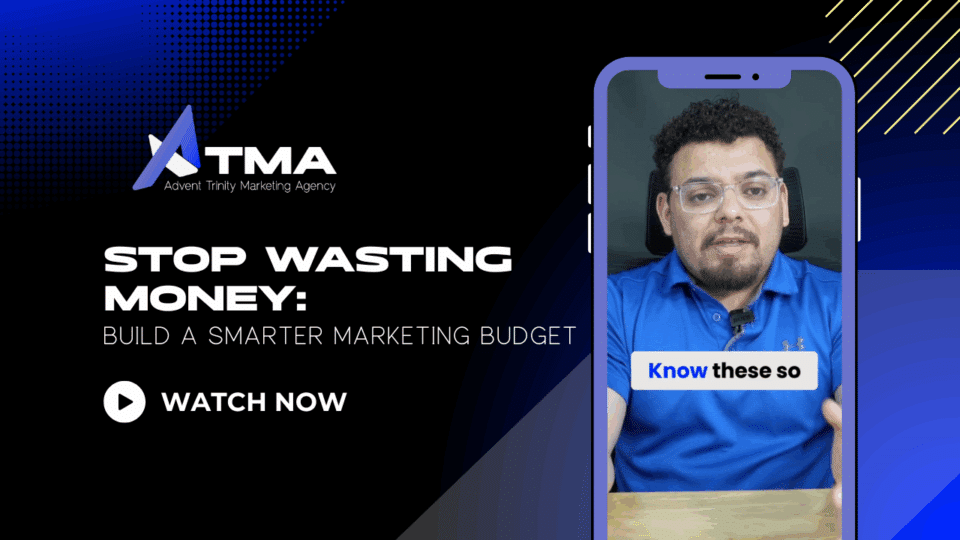
How To Use LinkedIn To Generate Leads For Your Business
July 24, 2023
Brand Colors — Everything You Need to Know
August 8, 2023Disruptive Marketing: A Comprehensive Focus on Innovative Breakthroughs
Explore the world of disruptive marketing. Discover its innovative nature, understand its impact, and learn how it’s redefining the business landscape.
Disruptive marketing – ever heard of it? If not, it’s high time you did. It’s the catalyst that’s transforming the way to do business. It’s not just about breaking the rules; it’s about writing new ones.
This blog post will shine a light on innovative marketing techniques that shape disruptive marketing campaigns. These campaigns break through the noise of traditional advertising and make lasting impressions on potential customers. From creativity to technology utilization, these techniques steer clear from the mainstream and instead venture into unexplored marketing territories.
We will walk you through the nitty-gritty of disruptive marketing, why it matters, and how it’s become a game-changer in today’s hyper-competitive business world. Buckle up because we’re about to dive headfirst into a marketing approach that’s making waves across industries!
What is Disruptive Marketing?
When we hear the word ‘disruption,’ what comes to mind? Chaos? Innovation? In the world of marketing, disruption has become a new beacon of success.
Disruptive marketing refers to tactics that challenge the status quo, shaking up established sectors. It’s the art of identifying and capitalizing on an unrecognized market opportunity. It’s about spotting and seizing overlooked market opportunities. It’s an ingenious approach that revolutionizes the marketing landscape, refusing to tread the well-worn path.
Disruptive Marketing vs. Traditional Marketing: A Comparative Dive
When we look at marketing’s evolution, we often divide it into two realms: traditional marketing and disruptive marketing. Both have their strengths and weaknesses. Let’s dissect each approach to gain a deeper understanding.
Traditional Marketing: Time-tested Tactics
Traditional marketing refers to tried-and-true strategies: print ads, TV commercials, radio spots, direct mail, and more. Its pros lie in its familiarity and broad reach. These strategies have stood the test of time and for a good reason. They offer a tangible, personal touch and can reach audiences without internet access.
However, traditional marketing also has its cons. It can be expensive, making it less accessible for small businesses. It also lacks the precise targeting that digital platforms offer, potentially leading to wasted resources. Additionally, it’s harder to track the effectiveness of traditional marketing campaigns.
Shaking Up the Norms
Disruptive marketing, on the other hand, challenges conventional norms. It capitalizes on unexpected tactics to surprise and engage audiences. It thrives on innovation, breaking away from the ‘business-as-usual’ approach. This can result in higher engagement, deeper customer connections, and increased brand visibility.
Yet, disruptive marketing comes with its own set of challenges. It can be risky, as it often involves stepping into uncharted territories. Not all disruptive campaigns will resonate with audiences; some may even backfire. Also, disruptive marketing requires a deep understanding of the market and audience, demanding more research and insight.
Why Disruptive Marketing Succeeds While Traditional Approaches Falter
Disruptive marketing techniques work because they pivot away from the conventional and challenge the status quo. They capture attention and ignite curiosity, thus engaging potential customers in an impactful way.
On the contrary, methods that stick strictly to traditional norms often fail to resonate with the evolving market dynamics. They become background noise, unable to stand out in a saturated market. What doesn’t work are bland, repetitive messages and generic, uninspiring content. In the ever-evolving world of marketing, the innovative, daring, and disruptive tend to win the day.
Striking the Balance
So, which approach is superior? The answer isn’t black and white. In fact, the most successful marketing strategies often blend traditional and disruptive tactics. For instance, a business might use traditional methods to maintain brand recognition while implementing disruptive strategies to tap into new markets or demographics.
Ultimately, the ‘best’ approach depends on your business goals, target audience, and resources. The key is to stay flexible, open to change, and ready to adapt—whether that means sticking with the classics, shaking things up, or a little bit of both.
The DNA
Disruptive marketing sprouted from the seeds of the digital revolution. As consumers started swimming in the sea of information, traditional marketing lost its sparkle. Suddenly, advertisers needed to ‘disrupt’ the noise to catch consumers’ attention.
In essence, disruptive marketing ignites innovation. It encourages marketers to rewrite rules, reimagining products, services, or strategies. By marrying marketing with innovation, brands create unique value, disrupting the market landscape.
Key Principles of Disruptive Marketing
The first rule of disruptive marketing? Embrace change. While comfort zones feel safe, they rarely offer a competitive edge. Disruptive marketers dare to venture into uncharted territory, seeking new opportunities.
Next, engage customers in fresh, exciting ways. Don’t just meet consumer expectations; exceed them. Subvert the conventional, forge emotional connections, and create memorable brand experiences.
Technology and digital platforms are the playgrounds of disruptive marketers. From AI to AR, marketers tap into new tech to forge deeper connections with consumers.
Social responsibility also plays a critical role. Today’s consumers gravitate toward brands that contribute to a better world. Companies can disrupt the market by embedding social responsibility into their marketing strategies.
Of course, there’s no reward without risk. Disruptive marketers balance risks and rewards, striving to tip the scale in favor of the latter.
Disruptive Marketing in Action
Consider Tesla. They didn’t just produce electric cars; they altered the auto industry’s DNA. From direct-to-customer sales to over-the-air updates, Tesla’s disruptive marketing has propelled them to great heights.
AirBnB also stands out. By transforming everyday spaces into unique accommodations, AirBnb has disrupted the hospitality industry. Their peer-to-peer business model has become a marketing triumph.
Dollar Shave Club’s marketing strategy is another brilliant example. They upset the personal grooming market with their subscription-based model and humor-infused marketing.
Finally, think of Netflix. They’ve revolutionized entertainment with their disruptive marketing strategies. They turned a simple DVD rental business into a global streaming behemoth.
The Ripple Effects of Disruptive Marketing
Disruptive marketing generates substantial impacts. It can lead to increased market share, brand recognition, and profitability for businesses.
For consumers, it results in greater engagement, satisfaction, and loyalty. After all, disruptive marketing offers something different, something exciting.
In the broader market context, it fosters competition and innovation, driving higher standards across the board.
Navigating the Marketing Maze
Disruptive marketing is not without challenges. Companies can face regulatory hurdles, market resistance, risk management complexities, and ethical issues. Success requires careful navigation of these potential pitfalls.
Creating Your Disruptive Marketing Strategy
Paving the way for a disruptive marketing strategy begins with an in-depth understanding of your target market. Dig deeper than basic demographics. Understand their motivations, pain points, and how they engage with brands. For instance, if you’re a fitness company targeting busy professionals, an unrecognized market opportunity could be short, intensive home workout plans.
Next in line is ensuring that your disruptive marketing efforts align with your broader business goals. If your business goal is to establish yourself as a thought leader in your industry, your disruptive marketing approach could involve launching a cutting-edge podcast or hosting a unique online event series. Remember, being different should have a strategic intent.
Collaboration across departments is paramount for the execution of a successful disruptive marketing strategy. The marketing team, sales department, product development, customer service – everyone should be in sync. This cross-department integration could lead to innovative ideas. For instance, customer service insights could inspire a game-changing, customer-centric campaign that disrupts market norms.
You need to have metrics in place to gauge the effectiveness of your strategies. Monitor customer response, measure engagement and conversions, and adjust your tactics accordingly.
Maybe your ‘disruptive’ social media campaign doesn’t yield the desired results. Don’t fret; learn from the insights and adapt your strategy. After all, disruption is all about embracing change.
Disruptive Marketing: The Road Ahead
The future of disruptive marketing is rife with exciting trends. Digital marketing and artificial intelligence domains are poised to retain their key positions. Alongside, the focus on sustainability and social impact is on the rise, mirroring the dynamic demands of the consumer base.
No End, Just New Beginnings
Every disruption starts a new chapter in the marketing playbook. Disruptive marketing isn’t a buzzword. It’s an evolution, a revolution. As we’ve explored, this marketing trend profoundly impacts businesses, consumers, and the market at large.
It’s not about being different just for the sake of it. It’s about creating real, meaningful change. So, why not take the leap? Embark on your disruptive marketing journey. Shake up your strategies, make some noise, and leave your unique mark on the market.
Stay ahead of the curve. Embrace disruption. The marketing landscape is changing, and your brand can lead the charge. Here’s to your disruptive journey! Here’s to transforming the face of marketing!




